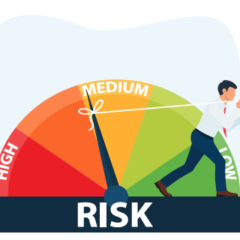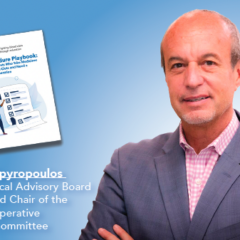Last updated on
A DOAC Deep Dive: Rivaroxaban
Updated December 2019
For the past several decades, warfarin has been the go-to anticoagulant (sometimes called a blood thinner), but newer treatments have emerged in the form of direct oral anticoagulants (DOACs). DOACs are as effective and safer than warfarin, especially in cases of serious bleeding. These anticoagulants include apixaban, betrixaban, dabigatran, edoxaban, and rivaroxaban.
Here’s a closer look at rivaroxaban.
What is it?
Rivaroxaban, also known as Xarelto®, is an anticoagulant that has several approved indications, including:
-
Stroke prevention in nonvalvular Afib
-
Treatment for venous thromboembolism (VTE)
-
VTE prevention in patients who have already been treated for a blood clot
-
VTE prevention after hip or knee replacement surgery
-
VTE prevention during hospitalization and after discharge in adults with acute medical illness
-
Prevention of major CV event risk in patients with CAD and PAD*
*In combination with aspirin
How does it work?
Rivaroxaban is a factor Xa inhibitor, meaning the drug binds to a factor Xa molecule, which stops blood from clotting at a certain point in the clotting cascade. The clotting cascade is the process by which the body creates blood clots.
“When it works the way it’s supposed to, the clotting cascade stops patients from bleeding and can save lives. However, it can also cause a problem if a clot forms in an inappropriate place in the body. It can cause stroke, heart attack, PE, and DVT,” explained John Fanikos, RPh, MBA, Director of Pharmacy Services for Brigham and Women’s Hospital. “The factor Xa inhibitors interrupt the clotting cascade, preventing the blood from clotting when it shouldn’t.”
Other factor Xa inhibitors include apixaban and edoxaban. By interrupting the clotting cascade and stopping clots from forming, these drugs help prevent DVT, PE, and more.
What is unique about rivaroxaban?
While apixaban and edoxaban are also factor Xa inhibitors, rivaroxaban has several benefits that set it apart from other DOACs.
One benefit is its dosage. Many patients on rivaroxaban for Afib or blood clots only have to take it once a day. This can be helpful for patients who have trouble remembering to take their medications.
“Many patients have trouble remembering to take their medications consistently. This can be dangerous for patients on anticoagulants. The once-daily dose of rivaroxaban can be helpful for some patients by simply reducing the number of times a day they need to take their medication,” explained Dr. Fanikos.
What are the risks?
Rivaroxaban has its own set of unique risks that all patients should discuss with their healthcare provider prior to taking it. As with warfarin and the other DOAC drugs, patients on rivaroxaban have a higher risk of bleeding. This risk is increased if a patient is taking aspirin, nonsteroidal anti-inflammatory drugs (NSAIDs), clopidogrel, selective serotonin reuptake inhibitors (SSRIs), serotonin norepinephrine reuptake inhibitors (SNRIs), or other medications to treat blood clots.
Patients on rivaroxaban should call their doctor if they experience any symptoms of bleeding. Symptoms may include unexpected bleeding, such as nosebleeds, bleeding from the gums, or menstrual bleeding that’s heavier than normal. Patients should also contact their doctors if they feel dizzy or weak and are experiencing headaches.
Interested?
If you believe that rivaroxaban may be a good fit for you, talk to your healthcare provider about your options. NATF’s Anticoagulation Comparison Chart is a great tool that you can use to discuss which anticoagulant is right for you.
This DOAC Deep Dive is for informational purposes only.



